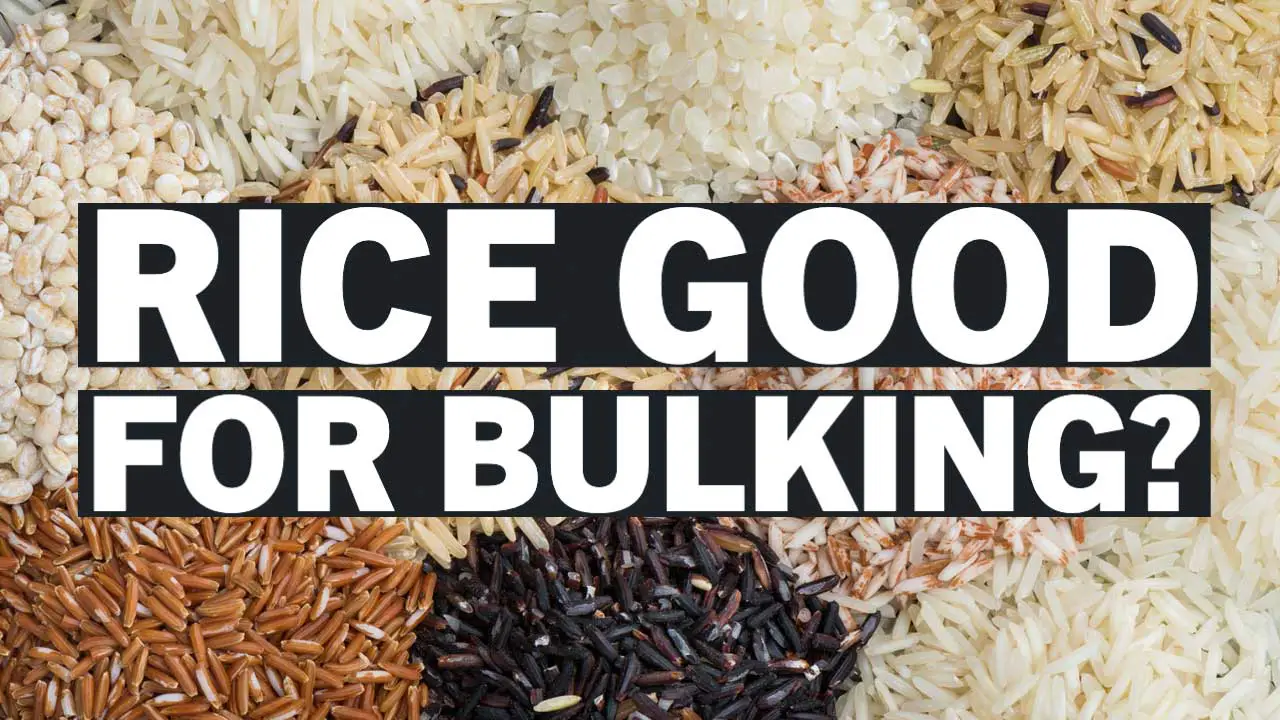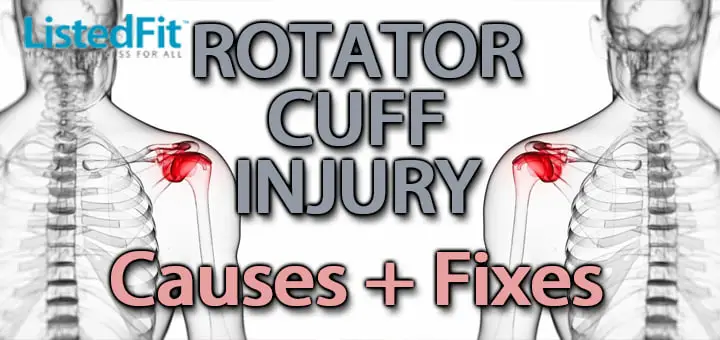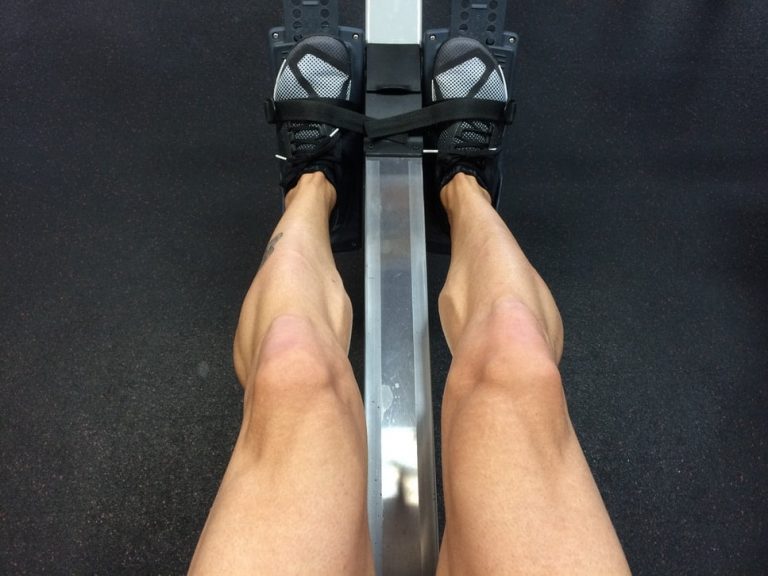Cryotherapy for Muscle Recovery: Fast-Track Your Healing Process

ListedFit is reader-supported. When you buy through links on our site, we may earn a small commission.
Cryotherapy, a popular recovery method, has been gaining attention in recent years for its potential benefits in muscle recovery.
You might have heard of athletes and fitness enthusiasts experiencing this freezing-cold treatment in order to reduce inflammation, alleviate soreness, and speed up healing after intense workouts.
But is standing in a chamber at sub-zero temperatures really a game changer for muscle recovery, or just another wellness fad?

Quick Summary
The rationale behind cryotherapy revolves around the idea that exposing the body to extreme cold will trigger a natural response, reducing inflammation and promoting faster muscle healing.
This concept is not entirely new, as ice baths have long been used by athletes seeking to soothe their sore muscles post-exercise.
With whole-body cryotherapy, however, the process is significantly quicker, allowing you to experience potential benefits in just a matter of minutes.
Key Takeaways
- Cryotherapy is a popular muscle recovery method using extreme cold
- The treatment aims to reduce inflammation and promote healing
- Whole-body cryotherapy offers a quick alternative to ice baths
Table of Contents
Cryotherapy Benefits

When considering cryotherapy for muscle recovery, you might be curious about the benefits it offers. Lucky for you, we’ve got you covered.
Cryotherapy can be a fantastic option to help you recover quicker after a challenging workout. This cold therapy can aid in reducing muscle soreness, which we all know can be a nuisance when pushing ourselves at the gym or during sports activities.
With less soreness, you’ll be ready to tackle your next workout or competition earlier than you would with traditional recovery methods.
Moreover, cryotherapy has been shown to offer potential improvements in joint pains and rheumatoid arthritis. By alleviating discomfort and inflammation around the joints, it can help you get back on track and enjoy a more active lifestyle.
Another enticing aspect of cryotherapy is its effect on weight loss efforts. While it’s not a substitute for proper diet and exercise, some individuals have found that it can help support their weight loss journey. The cold temperatures stimulate your body’s natural metabolic processes, causing it to burn a few extra calories.
Additionally, people who have tried cryotherapy found it helpful in managing anxiety or stress. This calming effect is likely due to the release of feel-good hormones during the process.
As you can see, there are several benefits to cryotherapy, making it an appealing option for muscle recovery and overall health. Give it a try, and you might be impressed by the results it offers in your quest for wellness.
Cryotherapy for Muscle Recovery – Does it work?

Cryotherapy is a popular method used to help athletes and fitness enthusiasts recover from sore muscles after intense workout sessions. But, you might be wondering, does it actually work for muscle recovery?
The quick answer is, yes, cryotherapy has been found to support better recovery after intense workouts.
Whole-body cryotherapy can help you with muscle pain relief and promote faster healing of athletic injuries. It has also been linked to reduced inflammation and an increase in energy levels post-exercise.
Here are some key benefits of cryotherapy for muscle recovery:
- Pain relief: Cryotherapy can help alleviate muscle pain and discomfort, making it easier for you to bounce back after a tough workout.
- Reduced inflammation: Cold temperatures in the cryotherapy chamber may help decrease inflammation, promoting faster recovery and better overall health.
- Improved blood circulation: The cold temperatures stimulate blood flow, helping to nourish muscles and transport oxygen and nutrients more effectively.
To make the most of cryotherapy for muscle recovery:
- Time it right: The best time to hop in the cryotherapy chamber is immediately after an intense workout to optimise muscle recovery.
- Speak to a professional: Before trying cryotherapy, consult with a healthcare provider or sports medicine expert to determine if it’s suitable for you and your workout routine.
- Be consistent: For best results, you might consider consistent cryotherapy sessions as part of your recovery routine.
Remember, cryotherapy is just one tool to aid muscle recovery, and its effectiveness can vary between individuals. It’s important to find the muscle recovery method that work best for you personally, whether that’s foam rolling, massage, stretching, or a combination.
Does Cryotherapy Burn Fat?
Cryotherapy is often linked to muscle recovery and pain relief, but you may have heard claims about its potential role in fat burning too. Let’s take a closer look at whether cryotherapy can actually help you burn fat.
Whole-body cryotherapy involves exposing your entire body to exceptionally cold temperatures, sometimes as low as -238 Fahrenheit (-150 degrees Celsius), for a short period of time, typically no more than five minutes. Advocates of cryotherapy suggest that this exposure can stimulate your body to burn more calories, which might assist in weight loss.

However, it’s essential to note that the scientific evidence regarding cryotherapy’s role in fat burning is limited. While some studies show that cold exposure can potentially increase calorie burn, therefore contributing to weight loss, it’s not clear if sufficient evidence exists to establish cryotherapy as an effective method for burning fat.
Moreover, it’s crucial to acknowledge that weight loss involves more than just burning calories.
Factors such as nutrition, exercise, and an overall balanced lifestyle play vital roles in achieving and maintaining a healthy weight. Solely relying on cryotherapy for fat burning might not result in the desired outcome.
In essence, while cryotherapy shows promising indications in the muscle recovery and pain relief areas, its role in burning fat remains unclear.
It’s essential to approach claims about cryotherapy’s fat-burning abilities with caution. Remember that a comprehensive and balanced approach to weight loss should involve other vital aspects, such as exercise and a healthy diet.

Does Cryotherapy Boost Metabolism?
Cryotherapy is a treatment where you expose your body to extremely cold temperatures for a short time, which is thought to have numerous health benefits. One question often asked is if cryotherapy can help boost metabolism. In this section, we’ll explore the relationship between cryotherapy and metabolism.
First, let’s consider what metabolism is. Your metabolism is the process by which your body converts calories from food into energy to support your vital functions. A higher metabolism means that you can burn more calories and potentially lose weight more effectively.
Now let’s turn our attention to cryotherapy and how it might interact with metabolism. Research has suggested that cryotherapy could temporarily increase metabolism due to your body’s exposure to extreme cold temperatures.
Essentially, your body has to work harder to maintain its core temperature, which can lead to a short-term spike in metabolic rate. This response is often referred to as thermogenesis, which is the production of heat in your body.
When you undergo cryotherapy, your body may release cold-shock proteins, which have been associated with reducing inflammation and promoting tissue repair.
These factors might lead to an increase in energy levels and potentially contribute to a temporary increase in metabolic rate.
However, it’s essential to bear in mind that this potential boost in metabolism is likely to be temporary and shouldn’t be relied upon as a long-term solution for weight loss or maintaining a high metabolic rate.
Also, the research on cryotherapy and its effects on metabolism is still limited, so the relationship between the two isn’t completely understood. Cryotherapy might be best utilised as part of a broader approach to maintaining a healthy lifestyle, including proper nutrition and regular exercise.
While cryotherapy could potentially provide a temporary boost in metabolism, further research is needed to confirm the extent of its effect.
Does Cryotherapy Hurt?
You might be wondering if cryotherapy hurts, especially as it involves exposing your body to extremely cold temperatures. This feeling of curiosity is perfectly normal! So, let’s talk about the experience you might have during a cryotherapy session.
Firstly, it’s important to understand that the sensation you’ll feel in a cryotherapy chamber is quite different from what you’d experience in an icy environment.
The chilled air in a cryotherapy chamber is dry, which makes the cold more tolerable. While you might feel a slight tingling sensation or stiffness, it’s usually not painful. In fact, some people find this chilly exposure quite invigorating!
Since a cryotherapy session usually lasts for only two to three minutes, you’re unlikely to experience severe discomfort.
However, it’s essential to follow the guidelines given by the cryotherapy specialist during your session, such as wearing the proper clothing and adhering to the recommended time limits.
As each person’s pain threshold and response to cold might vary, it’s important to listen to your body. Feel free to communicate any concerns or discomfort to the cryotherapy specialist during your session. But just know that many people have successfully completed cryotherapy and been just fine.
To sum up, while cryotherapy might feel a bit chilly and unusual at first, it’s generally not considered painful. So, go into your session with an open mind and trust that your body will adapt to the cold temperatures, and you might even find that you enjoy the experience!
Summary
There’s no denying that cryotherapy is a growing trend in the fitness world. However, it’s essential to approach it with an open mind and a healthy dose of scepticism.
While current research does suggest that whole-body cryotherapy can support faster workout recovery times, each individual’s response to the treatment may vary.
As you consider trying this cold therapy for your post-workout muscle recovery, remember that it’s not a magic solution that works for everyone the same way.
Cryotherapy has gained attention for its potential to speed up muscle recovery and reduce soreness after exercise. By exposing your body to extreme cold temperatures, you can encourage the natural healing process, ultimately getting you back to your workouts quicker.
Frequently Asked Questions
How does cryotherapy aid muscle recovery?
Cryotherapy helps with muscle recovery by exposing your body to extremely cold temperatures (below -116° F or -110° C) for a short period of time.
This exposure reduces inflammation in your muscles and helps restore their functional capacity after strenuous activities.
As a result, you may experience reduced muscle soreness and faster recovery.
What are the main benefits of cryotherapy for athletes?
For athletes, cryotherapy offers a range of benefits, including faster muscle recovery, reduced inflammation, and pain relief.
It may also temporarily boost your energy levels and alertness, which can be helpful when striving for peak performance in your sport.
Is cryotherapy recommended after workouts?
Yes, cryotherapy can be beneficial after workouts, especially for those who engage in high-intensity exercise or professional athletes.
The cold exposure helps with muscle recovery and reduces inflammation, making it a viable option for post-workout rejuvenation.
How quickly can cryotherapy relieve muscle pain?
Cryotherapy can provide relief from muscle pain relatively quickly because it works by reducing inflammation and soothing aches in your muscles.
While individual experiences may vary, some people report feeling the benefits of cryotherapy within hours of their treatment.
Does cryotherapy help with muscle injuries?
There is evidence to suggest that cryotherapy may help with muscle injuries by reducing inflammation and promoting the healing process.
You have to note that cryotherapy should not be solely relied upon for the treatment of muscle injuries and should always be used in conjunction with other appropriate medical care.
What’s the cost of a cryo chamber recovery session?
The cost of a cryo chamber recovery session can vary, depending on factors like the location and the facility you choose.
On average, a single session may cost you around £40-£60, with package deals often available for multiple sessions.
Keep in mind, though, that prices can be higher or lower based on where you live and which recovery centre you visit.
Additionally, some insurance plans may cover cryotherapy, so check with your provider.
Author
- Danny Loeb is a qualified Personal Trainer, Fitness Model and Writer. He enjoys blogging about health and fitness, messing around with Photoshop, and sharing his experiences with everyone.
Latest entries
 NutritionFebruary 6, 2024What Are Fillers in Supplements? – Unveiling Inactive Ingredients
NutritionFebruary 6, 2024What Are Fillers in Supplements? – Unveiling Inactive Ingredients FitnessAugust 23, 2023Best Post-Workout Foods: Great Ideas for Recovery and Results
FitnessAugust 23, 2023Best Post-Workout Foods: Great Ideas for Recovery and Results BulkingJuly 26, 2023Is Rice Good for Bulking? Unveiling the Truth
BulkingJuly 26, 2023Is Rice Good for Bulking? Unveiling the Truth CultureJuly 15, 2023Why Do People Hate Planet Fitness? Read This Before You Join!
CultureJuly 15, 2023Why Do People Hate Planet Fitness? Read This Before You Join!
Affiliates:
This post may contain affiliate links that at no additional cost to you, the site may earn a small commission. We only recommend products we would use ourselves and all opinions expressed on this site are our own.
General Advice:
The information provided in this article is for general informational purposes only. It is not intended as a substitute for professional advice. Always consult with a qualified healthcare professional before starting any new diet, exercise program, or making changes to your health routine.
Accuracy Advice:
While we strive to provide up-to-date and accurate information, the content in this article may not reflect the most current research or medical guidelines. We encourage readers to do further research and consult with professionals for more personalized advice.
Our Recommendations:
The products and services mentioned in any of our articles are recommended based on our independent research and personal experience. We are not sponsored by any company. We aim to suggest products and services we believe are of high quality and could be beneficial to our readers.






